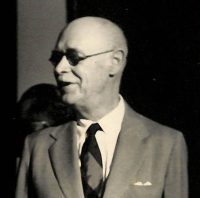Short chat at Malacañan with Francisco Benitez, in which I expressed pleasure in the new plans for education. I asked him about building school houses–he said that in future they were going to stop building, in expensive and ugly concrete, and construct in “native materials.” After all these years of folly, I am glad to see common sense at last prevail.
Long talk with Dr. Manuel Roxas about the Council of National Research and the importance of research work in general to promote diversification of the products of the country. We seemed to agree about the deplorable paralysis in all economic plans, due principally to the influence of sugar interests and their lobby in Washington. Nevertheless, he wishes to speed up research work to be ready for the time when the National Development Co. does get to work (if ever).
In p.m., went with A. D. Williams, Consulting Engineer of the Metropolitan Water System to inspect their plant. Lovely drive to Ipo–on a road new to me. Otley Beyer, who came along with us, pointed out many of his best archaeological sites in Rizal and Bulacan, where he made the first discoveries in 1926. He was very interesting about the neolithic and Iron Age people. The latter era in the Philippines was from 200 B.C.–700 A.D. He also showed us the streaks of red earth where the “tektites” are found, which he named “Rizalites.” These are, he said, the only meteoric stones of a silicate nature, and also the only ones which contain mineral elements not yet known on this earth. The valley of the Novaliches River is rich in ancient remains–a region now largely unoccupied by man. Beyer says this is probably due to two reasons: (a) malaria (still there) and (b) gold digging and panning by the ancients, which then petered out, so far as their methods went. The earth here is honeycombed with old worm-like tunnels, with ventilation holes every 30 feet. Beyer says this was the mining method of the Chinese who flocked to California, after the ’48, and began working over the sites abandoned by Americans. We saw the spot where gold signs were discovered when the Bureau of Public Works constructed the road to Ipo–which led to the Ipo and Salacot mining industries today.
Old women still pan about 50 centavoes a day worth of gold out of the Santa Maria River near there–just as their ancestors did 2000 years ago.
At Ipo, we saw the coffer-dam being constructed on the Angat River which is to be completed in 1938, thus making a deep and narrow lake ten kilometers back into mountains. The river varies fifty feet in height between lowest and highest levels, and is always swift. The six kilometer tunnel, which took six years to complete, gives a six foot (in diameter) opening down towards the filter plant near Novaliches. When finished, this project will ensure Manila for the next century at least a fine water supply. Visited the new reservoir at Novaliches, and also the recently opened filter plant a few miles below there. All very wonderful engineering.
